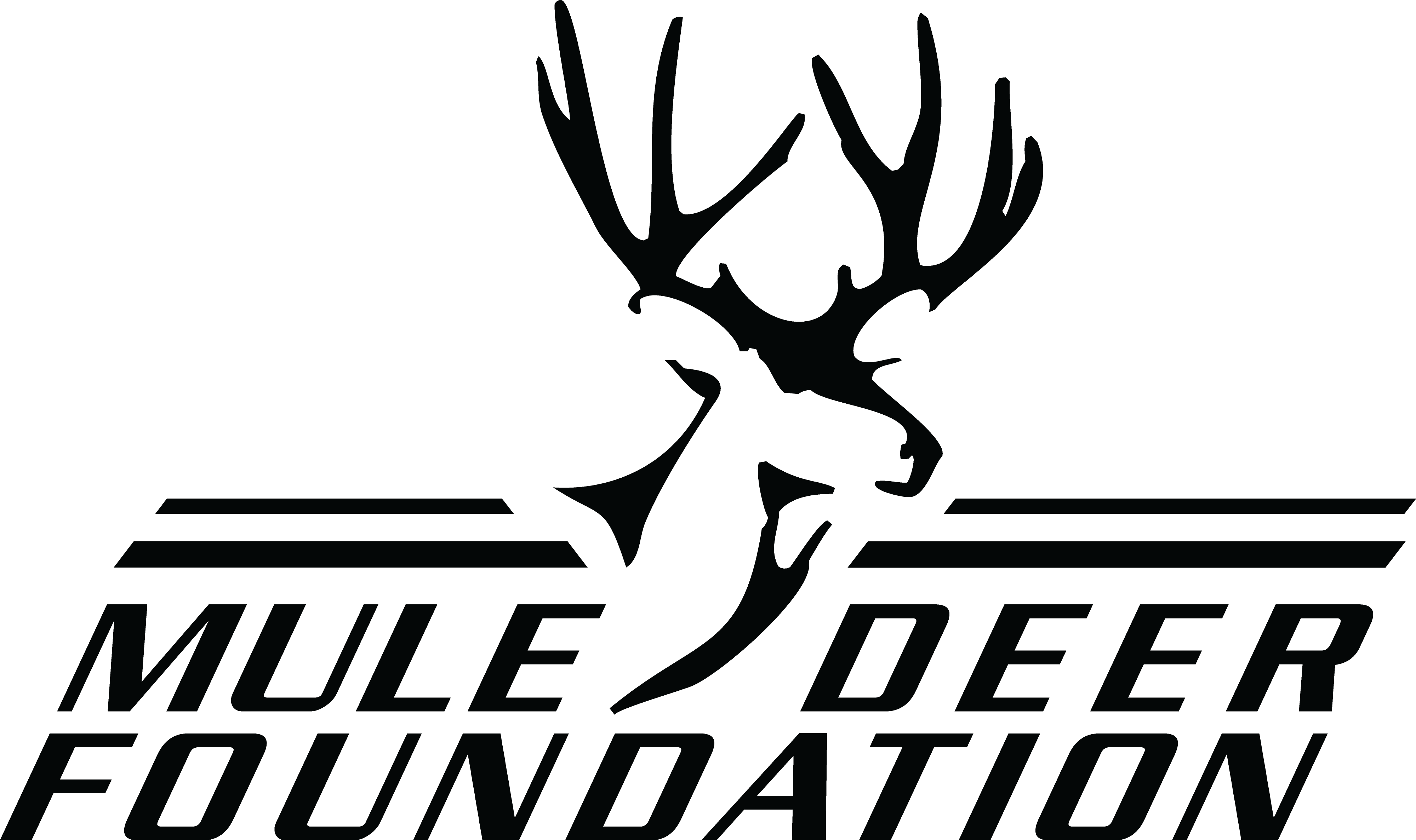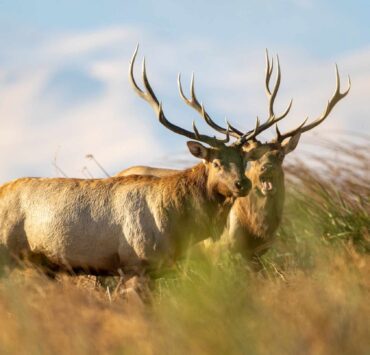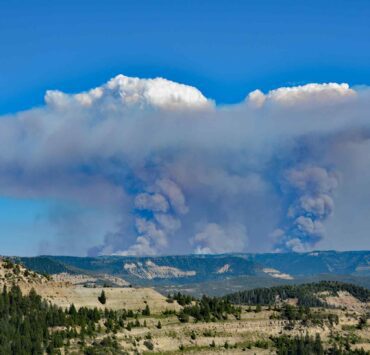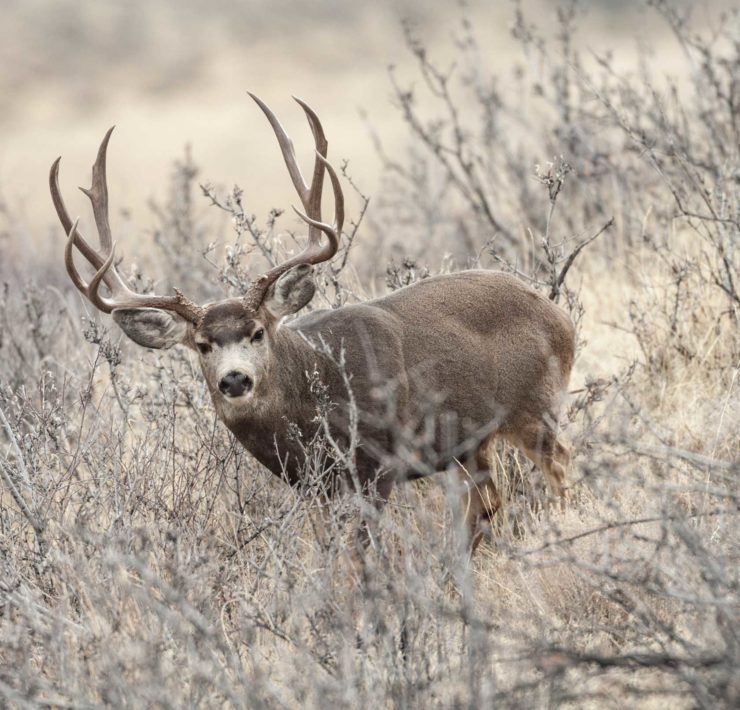Arizona State Spotlight – Spring 2022
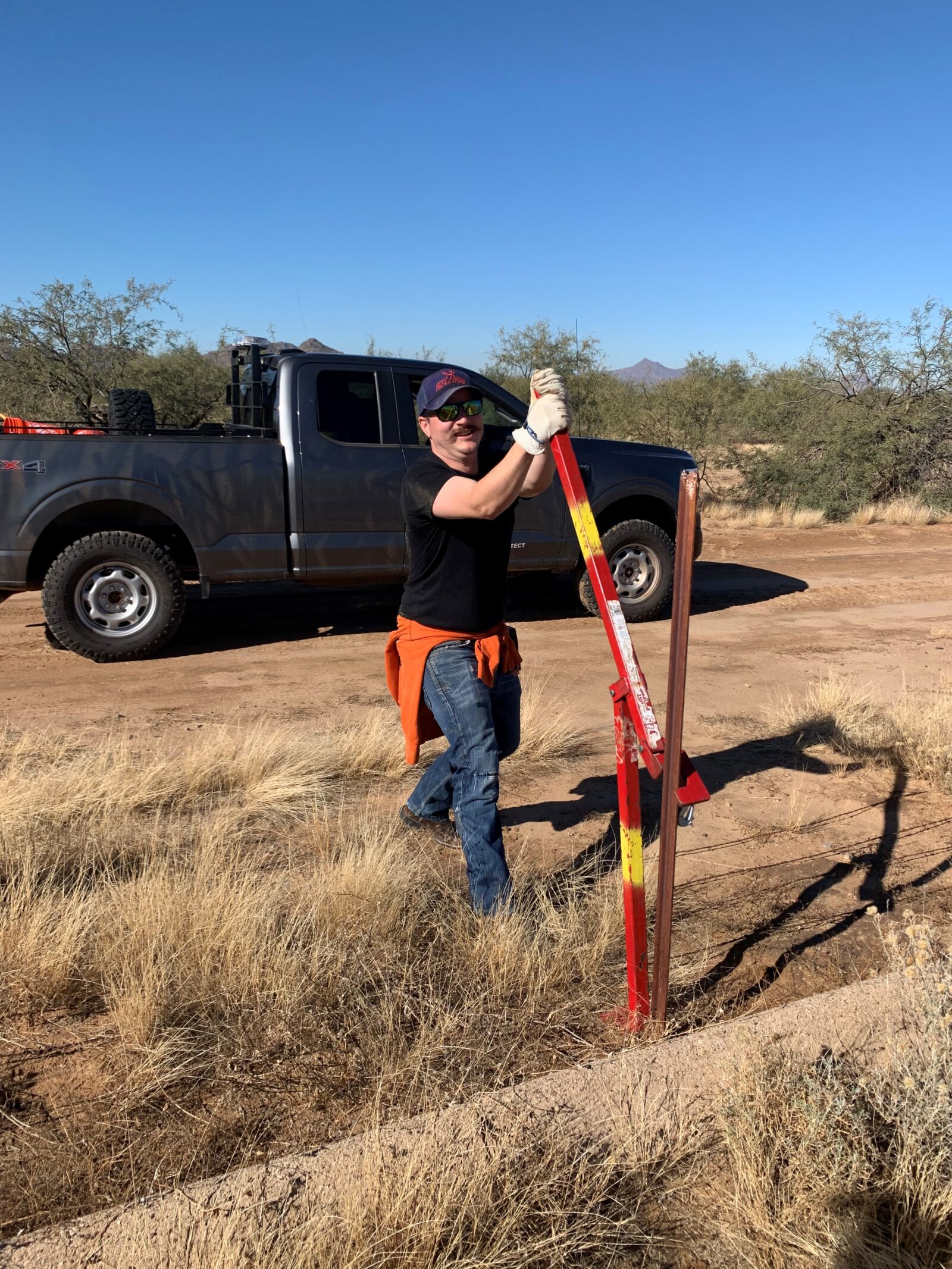
The Mule Deer Foundation is the only conservation group in…
Spring is in full swing and big things are happening here in Arizona with the Mule Deer Foundation and our partners at the Arizona Game and Fish Department (AZGFD). Having a pair of well-versed cooperative biologists on staff is always a plus. They not only understand the intricacies of the science and biology that give us our conservation direction, they also understand the in-depth fundraising component on local, state, and national levels that afford us the opportunities to be able to complete our conservation projects.
Alongside our very important local projects and collaring efforts to improve the database on Arizona’s vast migration corridors and mule deer mortality, we have some large-scale landscape projects that will have positive impacts on not only our mule deer populations but also that of the various species that inhabit these areas. These projects could not be accomplished without the cooperation of our conservation partners at AZGFD and the other Arizona non-government organizations (NGOs) that collectively have the same mindsets and goals in wildlife conservation. Let’s dig into an overview of our 2021 project successes and what lies in store for 2022.
With the collaboration of Arizona NGOs, AZGFD, and MDF, 52 projects were completed with 36 cooperators in 32 GMUs. The Department spent $1.9 million and matched this to $1.8 million of external funding. Due to the extended drought, our Landowner Relations and Habitat Enhancement Program continued to prioritize waters for our wildlife in 2021, and this is reflected in our output. We developed or redeveloped 39 catchments, worked on 28 dirt tanks, completed one project with three perennial springs, and completed five pipeline projects. This success is a result of our volunteers across the state and our organization’s ability to adapt and excel in the face of the pandemic and new health guidelines.
MDF’s cooperative biologists, Jackson Miller and Lucas Olson were gracious enough to provide the following update on some additional large-scale cooperative projects that were completed in 2021 as well as what’s to come in 2022 and beyond.
Historic wildfire suppression and land management practices have allowed for encroachment of pinyon-juniper woodlands into areas that traditionally were grasslands and savannahs. Woody encroachments on ecologically important grass and shrub dominated systems can have several negative impacts on both wildlife and livestock, primarily through the reduction of palatable vegetation and water availability.
In addition to the West Escudilla project featured on page 23, MDF, AZGFD, and the Kaibab National Forest are also working to improve winter habitat for the San Francisco Peaks mule deer herd that spend the colder months of the year in the southern portion of the Kaibab National Forest. In 2022, more than 520 acres of browse release will be completed in hopes to supply the herd with increased densities of nutrient-rich shrubs during their most vulnerable time of year.
Game Management Unit 18A is currently receiving a landscape-scale habitat restoration treatment. AZGFD, with aid from MDF, is treating almost 60,000 acres in the unit for encroached pinyon-juniper woodlands. The ultimate objective of this project is to recreate the pre-fire suppression landscape and produce a mosaic pattern by selecting younger trees for removal while leaving old-growth juniper. This type of selective treatment produces mulch or slash piles where trees once stood. Slash piles can act as micro-nurseries for desirable grasses and forbs by trapping moisture and preventing soil disturbance. Removing junipers can also have positive impacts on the local watershed. Juniper has been documented to utilize a large amount of water and when removed from the landscape can often stimulate spring flow. This pattern produces additional benefits by providing wildlife with hiding cover while also supplying increased visibility to help spot danger.
On the research front, MDF continues to support the Arizona Game and Fish Department in implementation of Secretarial Order 3362 (SO 3362). Through SO 3362 research funding, MDF and AZGFD have been using GPS collars to track and map the migrations and seasonal movements of more than 200 mule deer statewide. Many large scale GPS collar deployments and redeployments took place in 2021, including around 20 mule deer near Flagstaff where many of the state’s longest mule deer migrations take place.
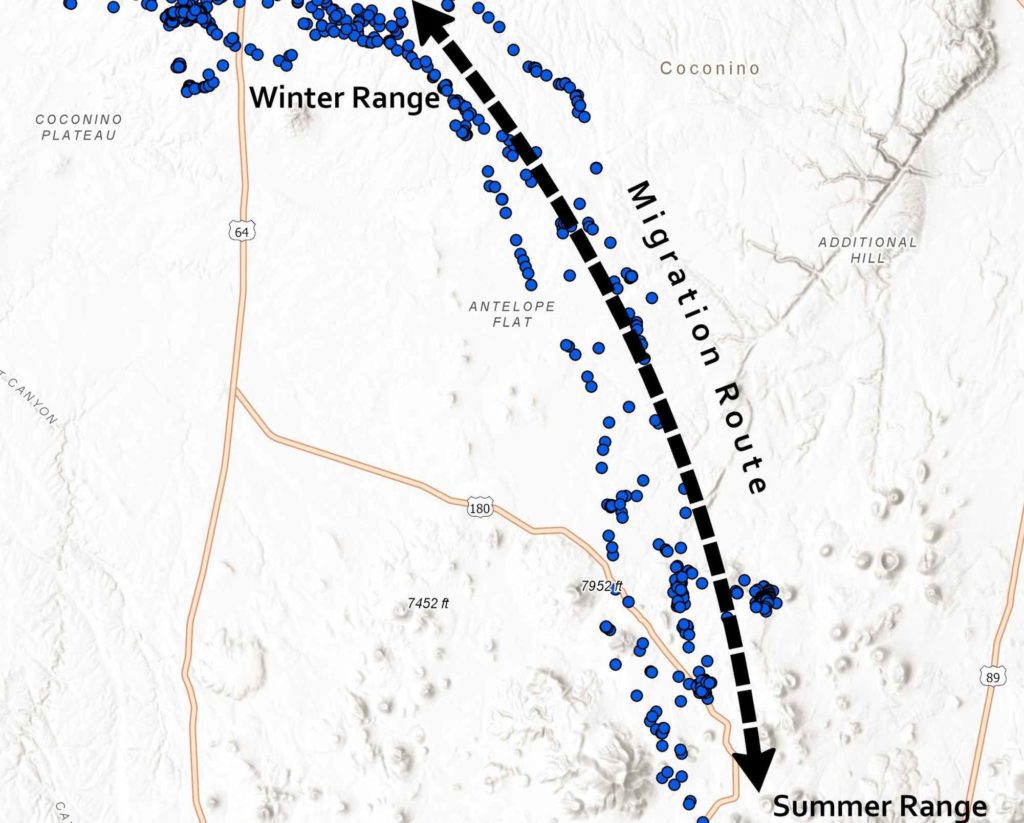
The GPS movement data reveals many interesting things. For example, during migration, animals use a series of “stopovers”, the equivalent of a gas station, to fill up on food and water throughout their journeys. The GPS data also shows us where man-made barriers such as fences or roads may be preventing natural movement. Using this information, financial resources toward habitat improvements can be allocated efficiently and in a way that has the highest benefit. For example, maybe it is only a small section of fence in need of wildlife-friendly improvements, or a few key water sources in stopover areas in need of extra capacity to benefit an entire population.
Mapped migration corridors have been released to the public in several formats. In November of 2020, the USGS released a final report on migration corridors titled “Ungulate Migrations of the Western United States, Volume 1”. The report included four mapped big game corridors in Arizona including the Kaibab and San Francisco Peaks mule deer herds. Volume II of the report is expected to be released in February of 2022 and will include updates to existing big game corridors as well as several new maps. The mapped corridors are also available to view on www.westernmigrations.net.
Migration maps and research are being applied for conservation planning efforts. Since 2018, information collected from GPS collar data has helped MDF and AZGFD to strategically locate projects, and secure over $1.1 million for habitat improvement projects on more than 9,000 acres on both public and private lands through the National Fish and Wildlife Foundation and the U.S. Fish and Wildlife Service Partners for Fish and Wildlife Program. The majority of these funds will be matched with state and partner money, putting more than $2.2 million on the ground for big game habitat improvements.
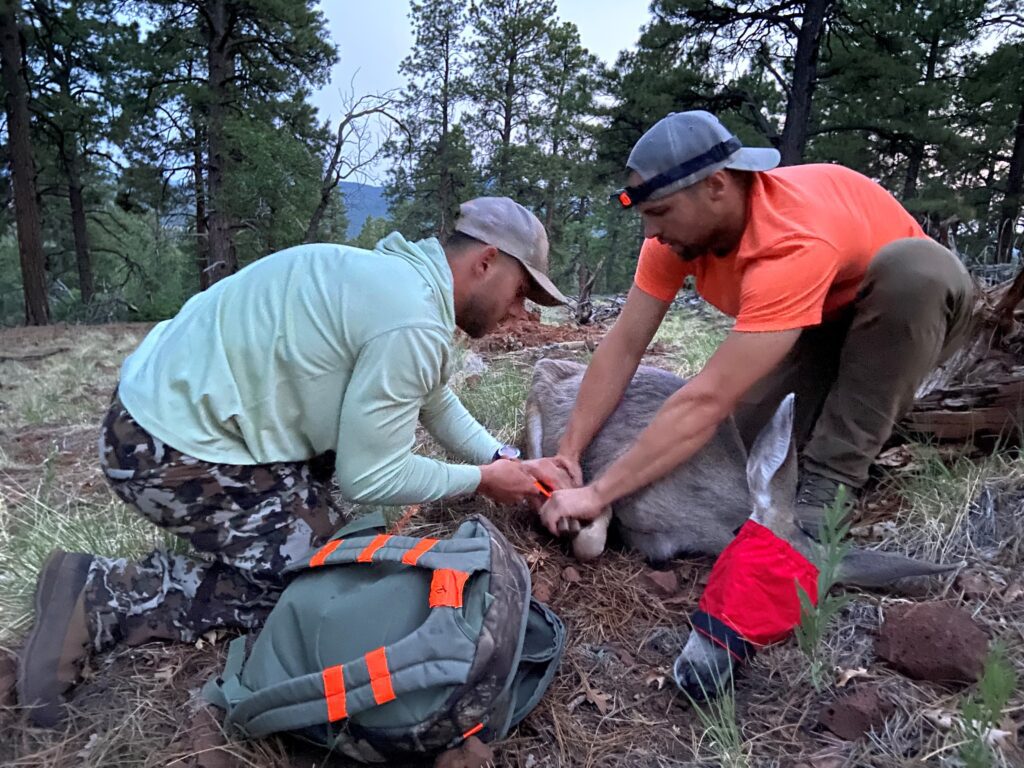
With that workload ahead of us, we are always in need of additional volunteers for various work in the field, such as youth camps, hunter safety courses, banquets, wildlife captures, and much more. We are also in full swing on the fundraising efforts with a full schedule of banquets and Gun & Bownanza events coming to a town near you over the course of the year. Please watch our social media sites for locations, dates, and times for these events. We currently have events scheduled in Tucson, Marana, Pinal County, Prescott, Yavapai County, Flagstaff, Payson, Yuma, the White Mountain region, and for those of you in the Kingman area we also have a banquet scheduled in nearby Las Vegas, Nevada.
Follow us on Instagram at muledeerfoundation_az_so.nv and on Facebook at Mule Deer Foundation-Arizona.
If you have any questions about becoming a member and joining a chapter in your area, upcoming events, volunteer opportunities, or donating to your local chapter, feel free to visit our website at muledeer.org or contact me directly.
This article appeared in the Spring 2022 issue of Mule Deer Foundation Magazine.
The Mule Deer Foundation is the only conservation group in North America dedicated to restoring, improving and protecting mule deer and black-tailed deer and their habitat, with a focus on science and program efficiency. MDF is a strong voice for hunters in access, wildlife management and conservation policy issues. MDF acknowledges regulated hunting as a viable management component and is committed to recruitment and retention of youth into the shooting sports and conservation. Get involved in your state or become a member at www.muledeer.org or call 1-888-375-3337.


